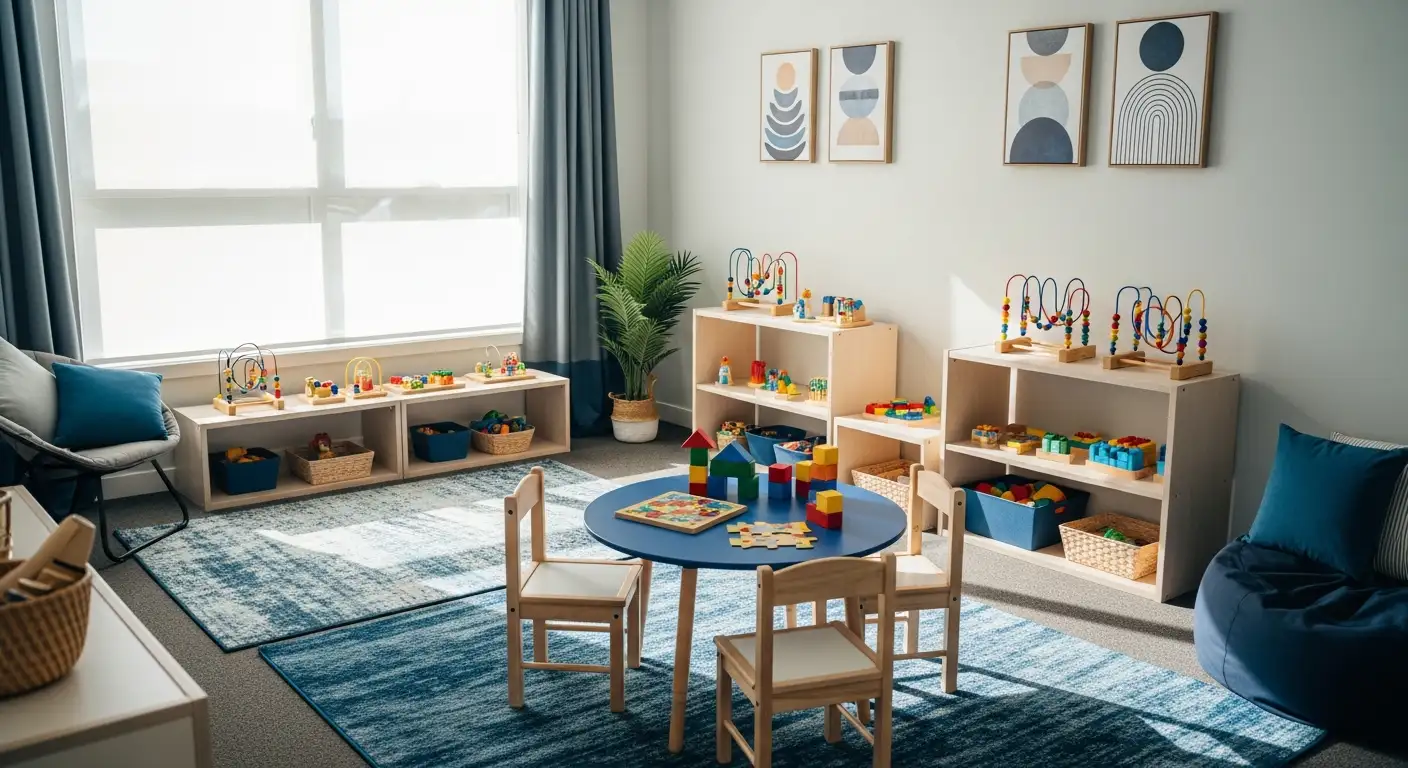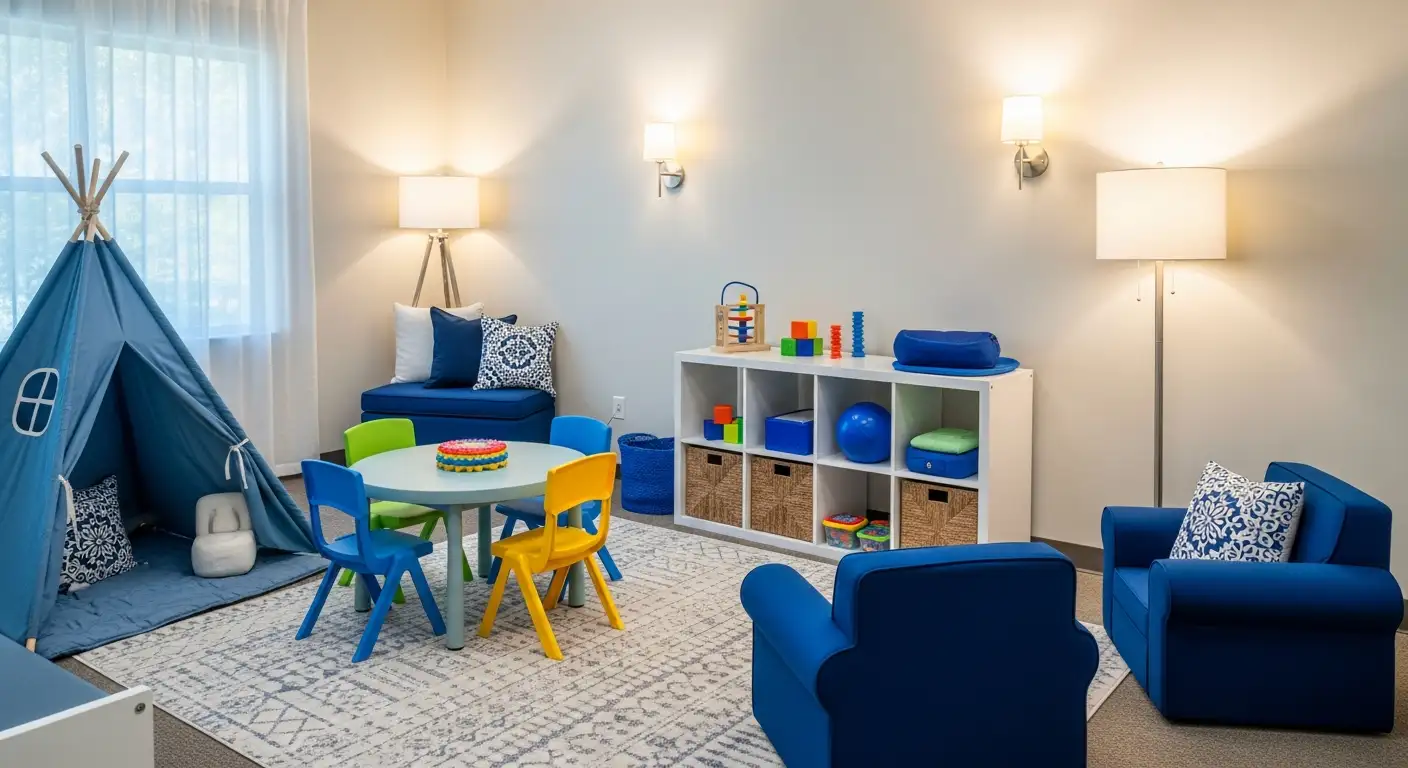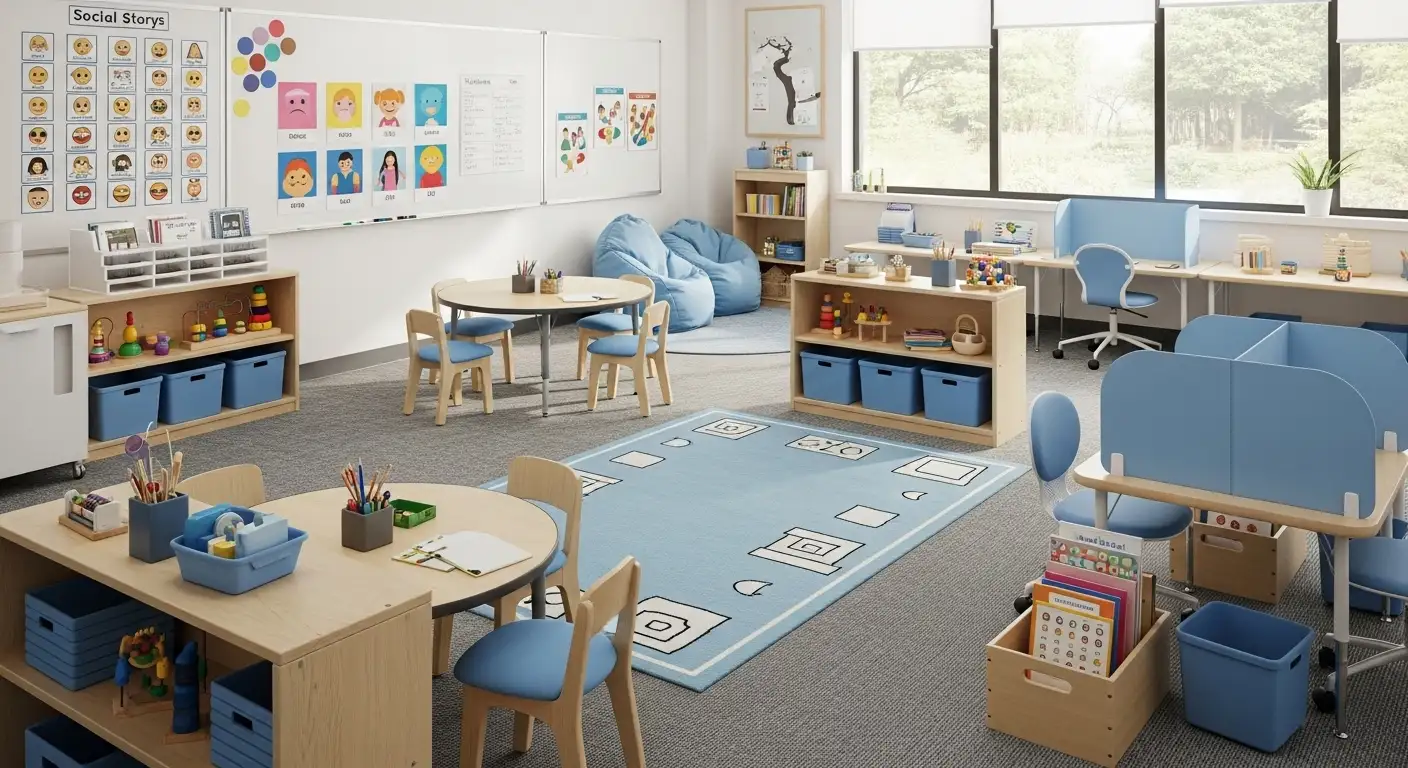Discrimination Training in ABA: A Parent’s Guide
Discover how discrimination training in ABA helps your child learn to distinguish cues and respond appropriately in daily life.

Key Points:
- Discrimination training helps children learn to differentiate between cues, objects, and situations, which improves daily functioning and decision-making.
- Effective ABA strategies use step-by-step instruction, prompts, and reinforcement to teach these skills.
- Parents can support progress at home through consistent practice, visual aids, and collaboration with therapists.
Understanding how your child interprets the world is crucial. Many children with autism may respond to all stimuli the same way, which can lead to confusion, frustration, or unsafe choices. Discrimination training in ABA (Applied Behavior Analysis) is designed to help children notice differences in cues—whether verbal, visual, or environmental—and respond appropriately.
This guide will break down what discrimination training is, how it works, and practical ways you can support your child’s learning every day.
What is Discrimination Training?
Discrimination training is a foundational concept in ABA therapy. At its core, it teaches children to distinguish between different stimuli and respond correctly to each one. Without this skill, a child might treat every situation the same way—such as answering “yes” to every question or grabbing any object within reach—which can be confusing or unsafe.
In ABA, discrimination training is about more than “right” and “wrong.” It builds the ability to:
- Recognize differences in objects, words, or cues.
- Respond in a way that is contextually appropriate.
- Generalize learning to new situations, which is essential for independence.
For example, a child may learn to respond to the word “jump” by jumping and to “clap” by clapping. Over time, they expand this understanding to social cues, classroom instructions, or safety signals. Programs like those provided by Attentive Autism Care help children learn these distinctions in a structured, supportive way.
Why Discrimination Skills Matter in Daily Life
Discrimination skills impact multiple areas of life:
- Safety: Understanding instructions like “stop” or “wait” prevents accidents.
- Communication: Correctly identifying verbal or nonverbal cues reduces frustration for both the child and family.
- Social Interaction: Knowing how to respond to peers appropriately improves friendships and cooperation.
- Learning: School readiness improves when children can differentiate between academic concepts, colors, numbers, and letters.
Without these skills, children might struggle with following routines, responding to questions, or interacting with others. Discrimination training addresses these gaps, creating a strong foundation for functional independence.
How Discrimination Training Works in ABA
ABA therapists use structured, evidence-based strategies to teach discrimination skills. These methods often involve breaking down tasks into smaller steps, using prompts, and reinforcing correct responses.
Step 1: Identify the Target Skill
The first step is choosing what the child needs to learn. Examples include:
- Differentiating between objects (e.g., an apple vs. an orange).
- Responding to verbal instructions (e.g., “sit” vs. “stand”).
- Recognizing emotions (happy vs. sad faces).
Step 2: Use Clear and Consistent Prompts
Prompts guide the child toward the correct response without causing confusion. Types of prompts include:
- Visual prompts: Pictures, gestures, or symbols.
- Verbal prompts: Specific instructions or cues.
- Physical prompts: Hand-over-hand assistance when necessary.

Step 3: Reinforce Correct Responses
Positive reinforcement strengthens learning. Rewards might include:
- Verbal praise (“Great job!”).
- Small toys or tokens.
- Preferred activities.
Step 4: Gradually Fade Prompts
As the child learns, prompts are reduced to encourage independent responses. For instance, a child who initially needs hand-over-hand assistance may eventually respond correctly just by hearing a verbal cue.
Step 5: Practice Across Settings
Discrimination skills must generalize beyond therapy sessions. Practicing at home, school, or playground ensures the child can apply learning in real-life contexts.

Practical Examples of Discrimination Training
To make this concrete, here are several ways discrimination training can be implemented in daily life:
Object Discrimination
- Teach your child to identify and request the correct object.
- Place two items in front of them, such as a cup and a spoon.
- Ask, “Which one is the cup?”
- Provide immediate reinforcement for the correct choice.
- Over time, add new objects and reduce prompts.
Color and Shape Recognition
- Introduce one color or shape at a time.
- Use flashcards or colored objects.
- Prompt the child to “point to the red” or “find the triangle.”
- Reinforce correct identification before gradually introducing more colors or shapes.
Verbal Instruction Discrimination
- Pair a verbal instruction with a physical action (“jump” → jump).
- Offer two instructions at once and prompt the correct one.
- Praise success and repeat with new instructions to build flexibility.

Emotional Recognition
- Show images of different facial expressions.
- Ask, “Which face looks happy?”
- Reinforce correct responses and discuss context (“He’s smiling because he’s having fun”).
- Eventually, use real-life situations for practice.
Safety and Social Cues
- Teach situational responses like “stop,” “wait,” or “come here.”
- Practice in controlled environments first, then gradually introduce more complex settings.
- Reinforce understanding and encourage verbal or physical acknowledgment of cues.
How Parents Can Support Discrimination Training at Home
Consistency is key. Parents are often the first line of reinforcement for new skills. Small, structured opportunities at home can significantly enhance progress.
Tips for daily practice:
- Routine Integration: Incorporate discrimination opportunities into daily routines. For instance, ask your child to hand you the fork or spoon at mealtime.
- Visual Supports: Use picture cards, charts, or labels for instructions and objects. Visuals help children process and remember differences.
- Choice Making: Offer simple choices (“Do you want the red cup or the blue cup?”) to encourage decision-making.
- Reinforce Correct Responses: Celebrate every correct response, no matter how small. Positive reinforcement strengthens learning and motivation.
- Modeling: Demonstrate actions or choices yourself. Children learn by observation and imitation.

Common Challenges and How to Overcome Them
Even with structured ABA therapy, discrimination training can present hurdles. Some common challenges include:
Overgeneralization:
- Children might respond correctly in one context but fail in another.
- Solution: Practice skills across multiple environments and with different people.
Prompt Dependency:
- Reliance on prompts can prevent independent responses.
- Solution: Gradually fade prompts while reinforcing independence.
Motivation Issues:
- Some children may not respond to standard reinforcement.
- Solution: Identify highly motivating rewards personalized to your child’s interests.
Difficulty with Abstract Concepts:
- Emotions, social rules, or verbal instructions may be harder to distinguish.
- Solution: Use concrete examples, role-play, and visual supports.
With persistence, guidance, and structured ABA therapy, most children show significant improvement in discrimination skills, enhancing daily functioning and overall confidence.

Benefits of Discrimination Training in ABA
Discrimination training impacts multiple areas of a child’s life:
- Improved Communication: Helps children understand and respond to verbal and nonverbal cues.
- Enhanced Safety: Teaches children to recognize and respond appropriately to environmental signals.
- Better Social Skills: Promotes understanding of social norms and emotions, supporting peer interactions.
- Academic Readiness: Builds foundational skills such as identifying letters, numbers, colors, and shapes.
Children who receive consistent discrimination training often experience fewer behavior challenges because they can more accurately interpret expectations and cues.
When to Seek Professional ABA Support
While parents can do a lot at home, partnering with an ABA therapy provider ensures structured, evidence-based progress. Professional therapists can:
- Conduct assessments to identify target skills.
- Develop individualized programs tailored to your child’s needs.
- Train parents on best practices for reinforcement and prompting.
- Track progress objectively and adjust strategies as needed.
For families looking for structured guidance, Attentive Autism Care offers personalized ABA therapy programs designed to teach discrimination skills while promoting independence and confidence. Their team works closely with families to ensure skills learned in therapy carry over into everyday life.
Getting Started with ABA Therapy
ABA therapy is most effective when started early, but it can benefit children of all ages. By focusing on skills like discrimination, ABA programs help children gain confidence and navigate the world with greater independence. ABA therapy in Colorado, Utah, North Carolina, Maryland, New Mexico, or Nebraska—like the programs offered by Attentive Autism Care—provides practical strategies for learning discrimination skills and beyond. Working with experienced therapists ensures your child receives consistent, evidence-based guidance tailored to their individual strengths.
Discrimination training in ABA doesn’t just teach “right” from “wrong”—it gives your child the tools to understand their surroundings, respond thoughtfully, and engage meaningfully with others. By combining therapy, home practice, and ongoing reinforcement, you can help your child build skills that last a lifetime. Reach out today to learn how we can support your family’s journey with ABA therapy in your area.



































































































